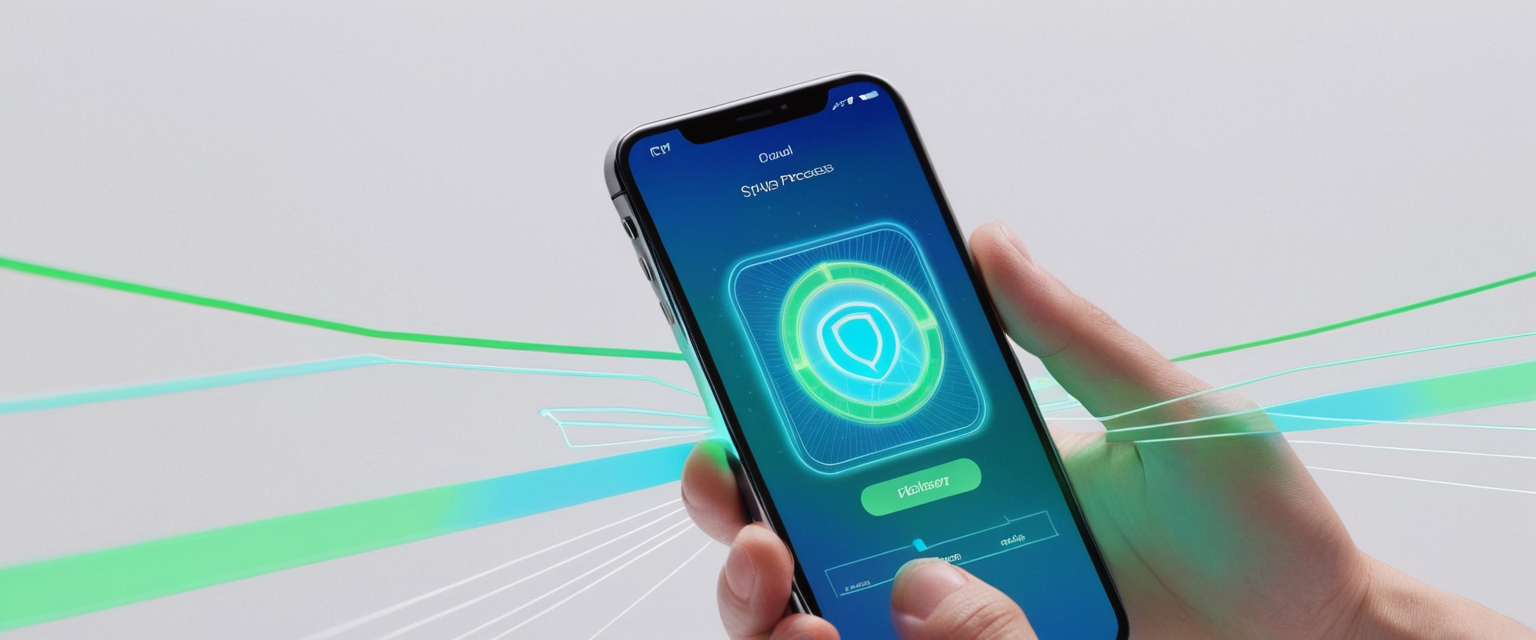
This comprehensive report examines the complete process of establishing and managing a Virtual Private Network connection on iPhone devices, encompassing setup methods, protocol selection, service evaluation, and optimization techniques. The analysis reveals that iPhone users have access to two primary configuration approaches—app-based installation through Apple’s App Store and manual system-level configuration—each offering distinct advantages depending on user technical proficiency and specific privacy requirements. Modern iPhone VPN implementations leverage industry-standard protocols including IKEv2, IPsec, and L2TP, with premium services increasingly supporting advanced protocols like WireGuard for enhanced speed and security. The report synthesizes findings from Apple’s official security documentation, leading VPN service providers, and practical user experiences to create an actionable framework for iPhone VPN deployment suitable for individual users, remote workers, and organizational deployments.
Understanding Virtual Private Networks on iPhone
Virtual Private Networks represent a fundamental technology for protecting digital privacy and security on mobile devices, yet their implementation on iPhone requires understanding both the underlying principles and Apple’s specific technical architecture. A VPN functions by encrypting all internet traffic originating from a user’s device and routing that encrypted data through a remote server operated by the VPN service provider, effectively masking the user’s real IP address and location from websites, Internet Service Providers, and other network observers. When a user connects to a VPN on their iPhone, the device establishes an encrypted tunnel that becomes the primary pathway for all network communications, whether those communications originate from Safari browsing, email applications, social media platforms, or any other internet-connected service.
The necessity of VPN protection on iPhone stems from numerous privacy vulnerabilities that users face during their daily digital activities. Internet Service Providers operating in many jurisdictions maintain comprehensive logs of all DNS queries and browsing history associated with customer accounts, creating detailed profiles of user online behavior that can be sold to advertisers, data brokers, or accessed by government agencies. Public WiFi networks, commonly encountered in coffee shops, hotels, airports, and other commercial establishments, present particularly acute security risks because these networks typically lack encryption between user devices and network infrastructure, allowing technically sophisticated attackers to intercept unencrypted communications, steal login credentials, and capture sensitive personal data. Additionally, websites visited by users can employ various tracking technologies to monitor browsing patterns, construct detailed behavioral profiles for advertising purposes, and in some cases attempt to identify the geographic location of website visitors.
iPhone devices, despite Apple’s reputation for security-focused design, require explicit VPN configuration to benefit from these privacy protections because the operating system does not include a built-in VPN service operated by Apple itself. Instead, iPhone features a built-in VPN client—essentially a framework that permits connection to external VPN services—but users must actively select and configure a specific VPN provider to establish protection. This architectural approach reflects Apple’s design philosophy of providing the underlying infrastructure while allowing users or organizations to choose their preferred privacy and security solutions according to their specific requirements and threat models.
Methods for Establishing VPN Connections on iPhone
The process of setting up a VPN on iPhone presents users with two fundamentally different approaches, each characterized by distinct levels of technical complexity, feature richness, and integration with the iOS ecosystem. Understanding these approaches and their respective advantages proves essential for users making decisions about how to implement VPN protection on their devices.
VPN Installation Through Dedicated Applications
The most straightforward and widely recommended method for establishing VPN protection on iPhone involves downloading and installing a dedicated VPN application from Apple’s App Store, a process that typically requires no more than five to ten minutes for users with basic mobile device familiarity. This approach begins with opening the App Store application on the iPhone and searching for the desired VPN provider by name, such as NordVPN, ExpressVPN, ProtonVPN, or Surfshark. Once the VPN application appears in search results, the user simply taps the “Get” button, which initiates a download and installation process managed entirely by iOS’s built-in application management system.
Upon first launching the freshly installed VPN application, users encounter a series of setup screens that guide them through initial configuration. These screens typically require users to either create a new account with the VPN service provider or log in with existing credentials, depending on whether they have previously subscribed to that particular VPN provider. Some VPN services, particularly those offering freemium models with limited functionality, do not require account creation to begin using basic features, though creating an account may unlock additional capabilities or premium features. After account authentication, the VPN application displays a prominent connection button, and tapping this button initiates the VPN connection process.
During this initial connection, iOS displays a permission dialog requesting that the user allow the VPN application to add VPN configurations to the device’s network settings. This dialog represents a critical security checkpoint where iOS ensures that users explicitly authorize VPN access before the application can modify fundamental network behavior. Users must tap “Allow” to grant this permission, and in many cases, iOS also requires biometric authentication through Face ID or Touch ID, or entry of the device passcode, to confirm the user’s identity and authorization. Once this permission is granted, the VPN application successfully establishes its first connection to a VPN server, typically auto-selecting the geographically closest server to the user’s current location to optimize connection speed.
The app-based installation method provides numerous advantages that explain why this approach represents the recommended configuration path for the vast majority of iPhone users. Dedicated VPN applications offer user-friendly interfaces that allow users to easily select alternative server locations, toggle the VPN connection on and off with a single tap, configure advanced security features like kill switches, and access customer support through in-app help channels. These applications often incorporate additional security and privacy enhancements beyond basic VPN tunneling, including ad blocking, malware protection, DNS leak prevention, and tracker blocking features that operate alongside the core VPN functionality. Furthermore, VPN applications can implement sophisticated auto-connect logic that automatically reestablishes VPN connections when the device transitions between different networks, preventing accidental unprotected periods when users move from home WiFi to cellular data or public WiFi networks.
Manual VPN Configuration Through iOS Settings
For users whose specific requirements necessitate VPN setup without relying on a third-party application, or for situations where organizational policies mandate manual configuration, iOS provides a built-in VPN client accessible through the device’s Settings application that supports three industry-standard VPN protocols. This manual configuration approach requires obtaining specific technical details from the VPN provider or organization, including the VPN server address, Remote ID, authentication credentials (username and password), and the protocol type that the server supports.
Accessing the manual VPN configuration interface requires navigating to Settings, then proceeding to General, and subsequently to VPN & Device Management or simply VPN, depending on the specific iOS version installed on the device. Within this settings section, users locate and tap the “Add VPN Configuration” button, which presents a form requiring entry of the technical connection parameters provided by the VPN service or organization. The configuration form requests the user to specify the VPN protocol type, with iOS native support extending to IKEv2, IPsec, and L2TP protocols. Upon selecting the appropriate protocol, the user enters the VPN server address, Remote ID value, and local identification information as specified by the VPN provider.
The manual configuration process requires users to enter authentication credentials, with most VPN configurations relying on username and password authentication, though some advanced configurations may employ certificate-based authentication instead. After entering all required information, users tap “Done” to save the VPN configuration, which adds the VPN connection profile to the device’s network settings without immediately establishing a connection. Subsequently, users can activate the VPN by returning to the VPN settings section and toggling the connection switch to the on position, at which point iOS establishes the encrypted VPN tunnel using the specified protocol and server parameters.
The manual configuration approach requires substantially greater technical knowledge compared to app-based setup and sacrifices numerous convenience and feature advantages provided by dedicated applications. However, this method offers specific advantages in certain contexts, particularly for organizations deploying VPN connections to managed devices through Mobile Device Management systems, for users connecting to custom or proprietary VPN servers, or for situations where using third-party applications proves infeasible due to device restrictions or policy requirements. Additionally, users preferring to avoid granting VPN applications extensive system permissions and background execution privileges may opt for manual configuration, which provides more granular control over VPN behavior through iOS settings.
Supported VPN Protocols and Their Characteristics
The selection of appropriate VPN protocols represents a fundamental decision affecting both the security characteristics and performance profile of the VPN connection established on iPhone devices. Apple’s iOS operating system provides native support for several established VPN protocols, each possessing distinct characteristics regarding encryption strength, authentication methods, connection speed, and compatibility with various VPN providers.
IKEv2/IPsec Protocol Implementation
Internet Key Exchange version 2 combined with Internet Protocol Security, commonly abbreviated as IKEv2/IPsec, represents the most modern protocol natively supported by iOS and generally represents the optimal choice for most iPhone users seeking to balance security, speed, and compatibility. IKEv2 implements sophisticated key exchange mechanisms that establish cryptographic parameters between the client device and VPN server, with iOS supporting multiple authentication approaches including shared secrets, RSA certificates, Elliptic Curve Digital Signature Algorithm certificates, EAP-MSCHAPv2, and EAP-TLS authentication methods.
The IKEv2 protocol incorporates several technical innovations that make it particularly well-suited for mobile device usage, including the MOBIKE (Mobility and Multi-homing Protocol) feature that allows VPN connections to seamlessly survive transitions between different network types. When an iPhone user moves from WiFi to cellular data, or experiences temporary network disruption, the MOBIKE protocol enables the VPN connection to maintain authentication without requiring the user to manually reconnect, a capability that proves essential for maintaining continuous protection across the diverse network environments that mobile users encounter. Additionally, IKEv2 supports efficient packet fragmentation when traversing network links with restrictive maximum transmission unit sizes, preventing connection failures in networks with unusual configuration parameters.
Apple’s implementation of IKEv2 employs modern cryptographic algorithms by default, with encryption utilizing AES-256 or AES-128 depending on configuration, providing robust protection against current and anticipated cryptanalytic attacks. The protocol requires minimal processing overhead compared to legacy protocols, contributing to efficient battery consumption and optimal performance on mobile devices. For these technical reasons, IKEv2 represents the preferred protocol choice for users engaging in manual VPN configuration.
L2TP/IPsec Protocol Considerations
Layer 2 Tunneling Protocol operating in conjunction with IPsec, commonly designated L2TP/IPsec, represents an older protocol that maintains compatibility with legacy VPN infrastructure and certain organizational deployments. Despite continuing support in iOS, most contemporary VPN service providers and security experts recommend avoiding L2TP/IPsec for new deployments due to significant performance degradation and lower security characteristics compared to modern alternatives like IKEv2.
The primary disadvantages of L2TP/IPsec stem from its substantially greater computational overhead during encryption and decryption operations, resulting in measurable battery drain on mobile devices and reduced throughput compared to modern protocols. Additionally, the protocol authentication mechanisms supported by iOS include MS-CHAPv2 password authentication and shared secret machine authentication, both of which present cryptographic considerations relative to more modern authentication approaches. Consequently, L2TP/IPsec finds application primarily in legacy system integration scenarios rather than new VPN deployments on iPhone.
OpenVPN and WireGuard Protocols Through Applications
A significant limitation of iOS native VPN support concerns the inability to establish VPN connections using OpenVPN, despite that protocol’s status as an industry standard offering robust security characteristics and extensive deployment across both consumer and enterprise VPN services. Since iOS does not include native OpenVPN support, users requiring OpenVPN connectivity must install a dedicated third-party VPN application that implements the OpenVPN client functionality. The official OpenVPN Connect application available through Apple’s App Store provides this capability, allowing users to import .ovpn configuration files and establish OpenVPN connections through the application interface.
WireGuard, a contemporary VPN protocol offering exceptional performance characteristics and modern cryptography, similarly lacks native iOS support but has achieved rapid adoption among commercial VPN providers who implement WireGuard support within their dedicated applications. Leading VPN services including NordVPN, Surfshark, and ProtonVPN have integrated WireGuard support into their iOS applications, with some services implementing proprietary variations like NordVPN’s “NordLynx” protocol that combines WireGuard’s performance benefits with enhanced privacy features. Users seeking the superior speed and security characteristics of WireGuard on iPhone must therefore utilize dedicated VPN applications rather than attempting manual configuration through iOS settings.
Leading VPN Services and Their iPhone Implementations
The contemporary VPN marketplace presents numerous competing services with varying strengths regarding security architecture, server network quality, pricing structures, and application design specifically optimized for iPhone users. Evaluating the most prominent VPN services provides practical guidance for users making service selection decisions.
Protect Your Digital Life with Activate Security
Get 14 powerful security tools in one comprehensive suite. VPN, antivirus, password manager, dark web monitoring, and more.
Get Protected NowNordVPN Performance and Features
NordVPN has emerged as a leading recommendation for iPhone users based on comprehensive testing revealing exceptional performance characteristics and sophisticated feature implementation. The NordVPN iOS application leverages the WireGuard protocol through NordVPN’s proprietary “NordLynx” implementation, which combines WireGuard’s superior speed performance with additional privacy enhancements ensuring that user IP addresses remain invisible to VPN servers even during active connections. Performance testing conducted on standard broadband connections demonstrates that NordVPN achieves download speeds exceeding 890 Mbps when connecting to geographically proximate servers, representing among the fastest VPN performance available on mobile devices.
The NordVPN iOS application incorporates an intuitive interface enabling users to select from over 7,400 servers distributed across 118 countries, providing extensive geographic diversity for both privacy protection and content access purposes. The service implements strict no-logging policies that have been independently audited by reputable security firms, and the company operates from Panama, a jurisdiction notably lacking legal requirements to retain customer data and operating outside major international surveillance alliances. Additional features include built-in kill switch protection preventing accidental data leakage upon VPN disconnection, split tunneling allowing selective routing of specific applications outside the VPN tunnel, and ad blocking functionality protecting against malware and intrusive advertisements.
Pricing structures for NordVPN extend from approximately $2.99 monthly for extended subscription commitments to higher rates for shorter-term plans, with all subscriptions including a 30-day money-back guarantee permitting risk-free evaluation. NordVPN’s track record and performance characteristics have established the service as an excellent choice for iPhone users prioritizing both security and speed, making it an appropriate selection across virtually all usage scenarios.
Surfshark as Budget-Conscious Alternative
Surfshark VPN presents a compelling option for price-sensitive users seeking comprehensive features without the premium pricing associated with market-leading services. The service achieves particularly aggressive pricing at approximately $1.99 monthly for extended commitments, substantially undercutting competitors while maintaining comparable security architecture and performance characteristics. A unique advantage of Surfshark involves the provision of unlimited simultaneous connections per subscription, enabling users to protect all household internet-connected devices through a single Surfshark account.
The Surfshark iOS application implements WireGuard protocol support with the same double-NAT privacy enhancement as NordVPN, providing excellent speed performance across geographically diverse server locations. Testing demonstrates that Surfshark achieves download speeds exceeding 650 Mbps on proximate servers, representing excellent performance suitable for streaming, downloading, and bandwidth-intensive applications. Like NordVPN, Surfshark operates from the Netherlands under a strict no-logs policy subjected to independent security audits, and the service provides split tunneling, kill switch protection, and ad blocking functionality through its iOS application. For budget-conscious users requiring comprehensive VPN protection, Surfshark represents an exceptional value proposition.

ExpressVPN and Premium Positioning
ExpressVPN occupies a premium market position characterized by exceptional reliability, professional support infrastructure, and proprietary protocol development. The service implements “Lightway,” ExpressVPN’s own VPN protocol designed to provide superior performance and reliability on mobile devices while maintaining modern cryptographic standards. While Lightway typically achieves slightly slower speeds than WireGuard implementations, ExpressVPN’s overall network quality and connection reliability have earned consistent positive evaluations from independent security researchers.
The ExpressVPN iOS application provides straightforward, minimalist interface design that prioritizes simplicity and ease of use, allowing new users to establish VPN connections within seconds of launching the application. The service maintains approximately 3,000 servers across 105 countries and explicitly supports streaming service access, having consistently demonstrated the ability to circumvent geographic content restrictions on Netflix and other popular streaming platforms. ExpressVPN pricing extends to approximately $3.49 to $4.99 monthly depending on subscription length, positioning the service as premium relative to competitors despite its restricted feature set compared to services like NordVPN.
ProtonVPN and No-Cost Option
ProtonVPN merits special consideration as the only commercially viable no-cost VPN service that security researchers deem genuinely safe and respectable regarding data protection practices. The service was created by the team behind ProtonMail, the world’s largest encrypted email provider, and maintains consistent commitment to user privacy and security across its product portfolio. ProtonVPN’s free tier provides unlimited data, strict no-logging policies, DNS leak protection, and access to approximately 400 servers distributed across numerous countries.
The ProtonVPN iOS application uses modern WireGuard protocol by default for free users, providing exceptional speed characteristics without financial expenditure. Users requiring premium features such as access to specialized servers (P2P streaming servers, Tor integration servers), connection to higher-speed servers, or simultaneous connections across multiple devices can upgrade to paid tiers at reasonable pricing. For users evaluating VPN services before committing financially, or for individuals with minimal privacy requirements beyond basic protection, ProtonVPN’s free offering provides legitimate security without apparent data monetization concerns.
Managing and Controlling VPN Connections
After successfully establishing VPN functionality on iPhone, users require practical knowledge regarding how to monitor connection status, change server locations, optimize performance, and troubleshoot connection issues that may arise during normal usage.
Monitoring VPN Connection Status
Users must develop reliable methods for verifying that VPN protection remains active during internet usage, as inadvertent VPN disconnection creates privacy vulnerability despite the user’s belief that protection persists. On earlier iPhone models, a small VPN icon appeared permanently in the status bar when a VPN connection was active, providing visual confirmation of protection status. Modern iPhone models with notch displays exhibit different behavior where the VPN indicator appears briefly upon connection establishment but subsequently disappears from the status bar despite the VPN connection remaining active.
To address this design limitation, iPhone users can access the Control Center by pulling down from the top-right corner of the screen, revealing a menu containing a VPN status indicator alongside WiFi and cellular signal indicators. This location provides easy access to VPN connection status without requiring navigation to the Settings application. Alternatively, users can navigate to Settings → General → VPN & Device Management and tap the VPN entry to view detailed connection status. Most dedicated VPN applications display prominent connection status indicators within their primary interface screens, providing visual confirmation that VPN protection remains active.
Changing Server Locations and Optimizing Performance
Users frequently require the ability to change VPN server locations to access geographically restricted content, optimize connection speed, or circumvent regional blocking measures. Within dedicated VPN applications, users can typically access a server selection interface—often labeled “Locations” or “Servers”—displaying the complete list of available VPN servers organized by country. Tapping a location initiates disconnection from the current VPN server and reconnection through the newly selected server.
For users concerned with optimizing connection speed and performance, VPN services frequently provide automated server selection capabilities, such as NordVPN’s “Quick Connect” feature or the “Smart Location” option available in many services, which automatically select the geographically nearest server or the server with the lowest current load. Many leading VPN services calculate server proximity based on both geographic distance and current network latency, incorporating real-time measurements to select truly optimal server choices rather than relying solely on geographic proximity. Users can significantly improve VPN speed performance by enabling these automated server selection features rather than manually selecting distant servers.
Advanced Configuration Through Device Management
Organizations deploying VPN connections to managed iPhone devices through Mobile Device Management systems gain access to sophisticated configuration options unavailable to individual users, including VPN On Demand policies that automatically activate VPN connections when accessing specified domains, Per-app VPN configurations that tunnel only specific application traffic through the VPN while allowing other applications to connect directly, and Always-On VPN requiring that all network traffic traverse the VPN tunnel without exception.
These advanced deployment capabilities prove particularly valuable in enterprise security contexts, allowing IT administrators to implement granular traffic policies that protect sensitive corporate communications while permitting personal device usage to bypass VPN tunnels to preserve bandwidth and performance. VPN On Demand policies eliminate the need for users to manually connect to VPN before accessing internal resources, as the device automatically establishes VPN connections whenever applications attempt to access specified corporate domains.
Troubleshooting Common VPN Connection Issues
Despite straightforward setup processes, users occasionally encounter VPN connection failures, persistent disconnection issues, or performance degradation requiring systematic troubleshooting approaches.
Addressing Connection Authorization Failures
Some users experience failure when attempting to authorize VPN applications to add VPN configurations to their devices, particularly when using devices with recent iOS versions or when security settings remain restrictive. This issue frequently arises when iOS requires passcode or Face ID authentication during the authorization process, and in rare cases, the authorization interface becomes unresponsive. Users experiencing persistent authorization failures should disable device passcode protection temporarily to complete VPN authorization, then re-enable passcode protection immediately afterward, which resolves the issue without permanently compromising device security.
Resolving Automatic Reconnection Issues
Some users report frustration when VPN connections repeatedly turn off and reconnect without deliberate user action, creating an unstable user experience and inconsistent privacy protection. These spontaneous reconnections typically result from VPN applications with auto-connect settings enabled, which automatically reestablish connections whenever particular network conditions occur. Users experiencing unexpected reconnections should access the settings within their VPN application and disable auto-connect or “Connect on Demand” features, ensuring that VPN connections remain under deliberate user control. Within iOS Settings, users can navigate to VPN & Device Management, access the VPN configuration details, and toggle off the “Connect On Demand” option to prevent unwanted automatic reconnections.
Network Connectivity Issues After VPN Activation
In certain cases, users report complete loss of internet connectivity after activating a VPN connection, which typically indicates configuration errors in the VPN settings or incompatibility between the VPN configuration and the device’s current network environment. Users should first verify that the VPN connection has actually completed by checking the VPN status through settings or the VPN application interface, as connection attempts may timeout without clearly communicating failure status.
If the VPN connection persists while internet connectivity remains unavailable, users should attempt disconnecting from the VPN, restarting the VPN application, and reconnecting. Restarting the entire device by powering it off and back on frequently resolves temporary network configuration issues preventing VPN connections from functioning properly. Users experiencing persistent connectivity issues should verify that they possess correct VPN server addresses and login credentials, contact their VPN service provider support team, and as a final resort, perform a network settings reset by navigating to Settings → General → Transfer or Reset iPhone → Reset → Reset Network Settings, which removes all saved network configurations and forces reconfiguration of network connections.
Security Considerations and Advanced Features
Beyond basic VPN connectivity, understanding the security implications of VPN usage and leveraging advanced security features available within modern VPN services enhances protection against evolving threat vectors.

Kill Switch Protection Implementation
The kill switch feature represents a critical security mechanism that protects against data leakage resulting from unexpected VPN connection failures. When a kill switch remains enabled and the VPN connection unexpectedly terminates, the kill switch immediately blocks all internet traffic from the device until the VPN connection re-establishes, preventing applications from inadvertently communicating through unencrypted connections. This protection proves particularly valuable for activities requiring absolute confidentiality, such as financial transactions, access to confidential work documents, or communication with sensitive contacts.
Different VPN providers implement kill switches with varying scope and sophistication. Application-level kill switches restrict internet access only to specified applications selected by the user, permitting other applications to maintain connectivity during VPN disruption. System-level kill switches block all internet traffic when VPN protection becomes unavailable, providing comprehensive protection but potentially disrupting critical applications requiring immediate connectivity. Advanced persistent kill switches survive device reboots, preventing internet access until the user explicitly enables connectivity outside the VPN tunnel, providing maximum protection for users who prioritize security above all other considerations.
iPhone users can enable kill switch protection through their VPN application settings, typically locating a “Kill Switch” or “Internet Kill Switch” toggle within the security or advanced settings sections. Once enabled, kill switch protection operates automatically without requiring user intervention.
DNS Leak Prevention and Testing
DNS leakage represents a subtle but dangerous vulnerability that can expose browsing activity and real location information even when the VPN connection itself functions correctly. When a device needs to access a website, it first queries a DNS server to translate the human-readable domain name into the corresponding numeric IP address. If the VPN connection fails to route DNS queries through the VPN server, the device may send DNS queries directly to the ISP-operated DNS server, revealing the websites being visited to the ISP despite the remainder of internet traffic traversing the VPN tunnel.
To prevent DNS leakage, reputable VPN services operate their own DNS servers and force all DNS queries through the VPN tunnel, ensuring that ISPs and other network observers cannot determine which websites users visit. Users should verify that their chosen VPN service implements DNS leak protection by conducting testing through websites like DNSleaktest.com, which reveal whether DNS queries are being properly routed through the VPN infrastructure. To conduct a DNS leak test, users should connect to a VPN server in a different country, visit dnsleaktest.com, click the “Standard test” button, and examine whether the displayed DNS server IP addresses correspond to the VPN server location rather than their true ISP location.
Verification of VPN Functionality
Despite successful connection establishment, users should periodically verify that the VPN functions correctly and effectively masks their true IP address and location. The most straightforward verification method involves comparing the user’s apparent IP address before and after VPN connection, which can be accomplished through websites like “What Is My IP Address” that display the IP address from which the user is connecting. Users should disconnect from the VPN and note their actual IP address, then reconnect to the VPN and revisit the website to confirm that a different IP address—corresponding to the VPN server location—appears instead of their true IP address. If the displayed IP address remains unchanged after VPN connection, the VPN is not functioning correctly and should be reconfigured or replaced with an alternative service.
Performance Optimization and Battery Considerations
VPN usage introduces measurable effects on device performance and battery consumption that users should understand to make informed decisions about always-on versus on-demand VPN activation.
Understanding VPN Battery Impact
VPN connections consume additional battery power compared to direct internet connections due to the computational overhead associated with encryption and decryption of all network traffic. The encryption processes implemented by VPN protocols require continuous CPU processing to protect outgoing traffic before transmission and decrypt incoming traffic upon receipt, consuming electrical energy that reduces device battery longevity. Additionally, VPN implementations require continuous background activity to maintain connection status, monitor network conditions, and reestablish connections when transitioning between network types, further contributing to battery drain.
The magnitude of battery impact varies substantially depending on the VPN protocol selected, the intensity of internet usage, network conditions, and the specific VPN application implementation. Users conducting intensive internet activities such as video streaming consume substantially more battery power than users engaged in light browsing or messaging, and VPN usage amplifies these differences proportionally. Testing demonstrates that typical VPN usage patterns result in approximately 5-15% additional battery consumption compared to direct internet connections, though activities involving substantial data transfer demonstrate more pronounced battery drain.
Protocol Selection for Battery Efficiency
Users concerned with battery consumption should prioritize VPN services supporting modern protocols like WireGuard, which utilize significantly less processing power than legacy protocols like OpenVPN or L2TP/IPsec. Modern VPN protocols execute more efficient encryption algorithms requiring less CPU processing per byte of data, translating directly into reduced battery consumption. Users can dramatically improve battery efficiency by selecting VPN services leveraging WireGuard, such as NordVPN (through its NordLynx implementation), Surfshark, or ProtonVPN, rather than services relying on older protocols.
Additionally, users can optimize battery consumption by enabling VPN connections only when accessing sensitive information or traversing untrusted networks, rather than maintaining always-on VPN protection continuously. The decision to use on-demand VPN rather than always-on protection should reflect each user’s specific threat model and privacy requirements, weighing absolute privacy assurance against battery longevity and device performance considerations.
Advanced Deployment Models for Organizations
Organizations deploying VPN protection across employee iPhone devices face distinct requirements compared to individual users, necessitating centralized configuration management, policy enforcement, and sophisticated security controls.
Mobile Device Management Integration
Apple provides comprehensive integration between VPN capabilities and Mobile Device Management platforms, allowing IT administrators to deploy VPN configurations to managed devices without requiring user intervention. Organizations utilize MDM platforms such as Microsoft Intune, Jamf Pro, or Apple’s own Business Manager to create VPN configuration profiles specifying connection parameters, supported protocols, and authentication credentials. These profiles can be remotely deployed to devices, updated when connection parameters change, and enforced to prevent users from modifying VPN settings.
VPN On Demand policies enable particularly sophisticated deployment models where VPN connections activate automatically when applications attempt to access specified internal domains, eliminating manual connection steps while ensuring that sensitive corporate communications remain protected. Per-app VPN capabilities restrict VPN tunneling to designated applications, allowing business applications to benefit from corporate security protection while permitting personal applications to utilize direct internet connectivity, preserving bandwidth and providing improved performance for non-business usage.
Enterprise Authentication Integration
Enterprise VPN deployments can incorporate sophisticated authentication mechanisms leveraging certificate-based authentication, multi-factor authentication, and integration with organizational identity management systems. Rather than requiring employees to remember or manage VPN passwords, organizations can deploy certificates to managed devices that automatically authenticate to VPN servers, eliminating password management overhead while reducing authentication-related vulnerabilities. Advanced deployments can require multi-factor authentication for VPN connections, ensuring that compromised passwords alone cannot enable unauthorized VPN access.
Comparative Analysis of VPN Deployment Choices
The decision between various VPN approaches—app-based commercial services versus manual configuration through iOS settings, free services versus paid offerings, and consumer implementations versus enterprise deployments—involves multiple considerations beyond simple setup process complexity.
Commercial VPN Services Versus Manual Configuration
Commercial VPN services accessed through dedicated iPhone applications substantially exceed manually configured VPN connections in terms of feature richness, user convenience, and support infrastructure. Dedicated applications provide intuitive interfaces enabling non-technical users to establish VPN protection within minutes, automatic server selection optimizing connection speed and latency, built-in DNS leak protection and kill switch functionality, split tunneling enabling selective traffic protection, and responsive customer support channels. Additionally, commercial VPN services distribute traffic across massive server networks with tens of thousands of servers, distributing load effectively to prevent server congestion and maintain optimal performance.
Manual configuration through iOS settings proves appropriate primarily in specialized contexts including legacy system integration, organizational deployments through MDM systems, and technical users requiring fine-grained control over VPN parameters. Most individual users benefit substantially from commercial VPN services due to superior user experience and advanced security feature implementation.

Free VPN Services Versus Paid Offerings
The free VPN landscape presents significant security and privacy concerns despite the obvious financial attractions of cost-free protection. Extensive research examining hundreds of free VPN applications reveals systemic security failures including deployment of malware, collection and sale of user data to third parties, routing of user traffic through malicious intermediaries, implementation of inadequate encryption, and retention of comprehensive usage logs despite privacy policy claims. Free VPN services must generate revenue through some mechanism, and when users represent the product rather than paying customers, data monetization frequently represents the revenue model.
Only a limited number of free VPN services maintain genuinely trustworthy practices, with ProtonVPN representing the most prominent example of a legitimately trustworthy free VPN created by developers with demonstrated commitment to privacy and security. Most users benefit substantially from paying modest monthly fees to established commercial VPN services rather than risking compromise through free alternatives. The marginal financial cost of reputable paid VPN services—typically between $2-5 monthly—represents minimal expense compared to the substantial security risks posed by untrustworthy free alternatives.
Completing Your iPhone’s VPN Shield
Establishing VPN protection on iPhone devices represents a fundamentally important step toward defending personal privacy and security in an increasingly hostile digital environment characterized by pervasive surveillance, data monetization, and sophisticated cyber threats. The comprehensive information provided throughout this analysis demonstrates that iPhone users possess straightforward pathways to implementing effective VPN protection through either convenient app-based installation or direct iOS configuration, with the choice between approaches reflecting individual technical proficiency and specific requirements. Modern VPN implementations leverage industry-standard protocols including the sophisticated IKEv2/IPsec specification, with leading VPN services increasingly incorporating advanced protocols like WireGuard that deliver exceptional performance while maintaining robust cryptographic protection.
The contemporary VPN marketplace offers compelling options across multiple pricing tiers and feature sets, with services like NordVPN and Surfshark delivering exceptional combinations of performance, security, and value to individual iPhone users, while ProtonVPN provides legitimately trustworthy protection at no financial cost for users with modest privacy requirements. Organizations implementing VPN protection across employee devices benefit substantially from Mobile Device Management integration, enabling centralized configuration, policy enforcement, and sophisticated security controls that adapt to evolving threat landscapes. Users implementing VPN protection should prioritize reputable, commercially established services rather than free alternatives carrying substantial security risks, should leverage built-in security features including kill switches and DNS leak protection, and should periodically verify VPN functionality through straightforward testing procedures.
The critical insight underlying successful VPN implementation on iPhone involves recognizing that while setup processes range from trivial to moderately complex depending on chosen approach, the ongoing commitment to maintaining active VPN protection during all internet usage activities ultimately determines whether VPN investment proves worthwhile. Users who establish VPN connections but subsequently disable protection during sensitive activities, or who maintain VPN configurations without verifying their continued functionality, sacrifice the substantial security benefits that motivated VPN deployment. Conversely, users maintaining vigilant VPN activation across all internet contexts benefit from powerful protection against ISP surveillance, network-based attacks on public WiFi, geographic content restrictions, and the increasingly pervasive tracking technologies deployed throughout the internet ecosystem. As privacy threats continue evolving and surveillance capabilities expand, VPN protection represents an essential security foundation for iPhone users prioritizing defense of personal information and digital autonomy.






